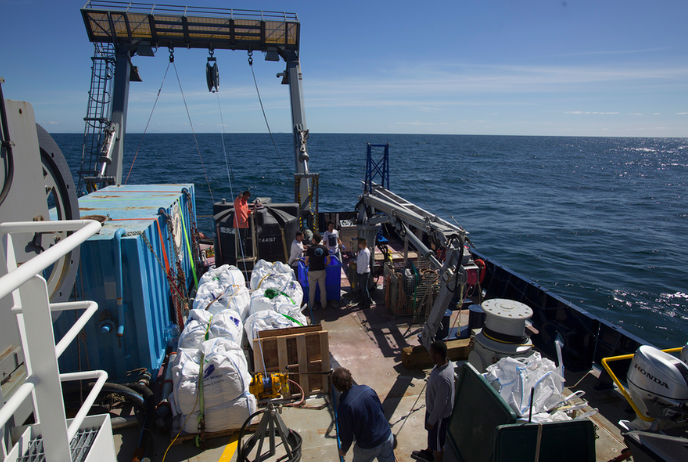
As electrification intensifies a problem is emerging: where are all the raw materials for the batteries going come from? As one recent EV report claims, the world could be in danger of running out of these exotic ingredients as soon as 2025, scuppering efforts to move away from more traditional forms of energy storage.
One solution is to turn to mining the sea. A new study, led by experts at MIT and the Scripps Institution of Oceanography has examined what impact this could have on the seabed and surrounding areas. The study has assumed a surface ship drops a tethered harvesting vehicle onto the sea bed at depths of up to 4,500m, then pumps up football-sized rocks known as polymetallic nodules. These would go onto the ship with the associated sediment dumped back into the water.
A previously unknown factor was the effect of the inevitable plumes this will cause. Should the waste be dumped as a mid-water plume or returned directly to the deep ocean? The new model predicts the size, concentration and evolution of sediment plumes under various marine and mining conditions. These predictions, the researchers claim, should be used by biologists and environmental regulators to gauge whether and to what extent such plumes would impact surrounding sea life.
“There is a lot of speculation about deep-sea-mining’s environmental impact,” says Thomas Peacock, professor of mechanical engineering at MIT. “Our study is the first of its kind on these midwater plumes, and can be a major contributor to international discussion and the development of regulations over the next two years. The science of the plume dynamics for this scenario is well-founded, and our goal was to clearly establish the dynamic regime for such plumes to properly inform discussions.”
One geographical area of interest is the Clarion Clipperton Fracture Zone (CCFZ) in the central Pacific, where many of these nodules are known to be rich in nickel and cobalt, useful for the construction of lithium-ion cells.
“Using foundational scientific principles from fluid dynamics, we designed the system so that it fully reproduced a commercial-scale plume, without having to go down to 1,000 meters or sail out several days to the middle of the CCFZ,” Peacock adds.
Over one week the team ran six plume experiments, using sensor systems such as a Phased Array Doppler Sonar (PADS) and epsilometer, developed by Scripps scientists to monitor where the plumes traveled and how they evolved in shape and concentration. The collected data revealed that the sediment, when initially pumped out of a pipe, was a highly turbulent cloud of suspended particles that mixed rapidly with the surrounding ocean water.
“There was speculation this sediment would form large aggregates in the plume that would settle relatively quickly to the deep ocean,” Peacock concludes. “But we found the discharge is so turbulent that it breaks the sediment up into its finest constituent pieces, and thereafter it becomes dilute so quickly that the sediment then doesn’t have a chance to stick together.”





















